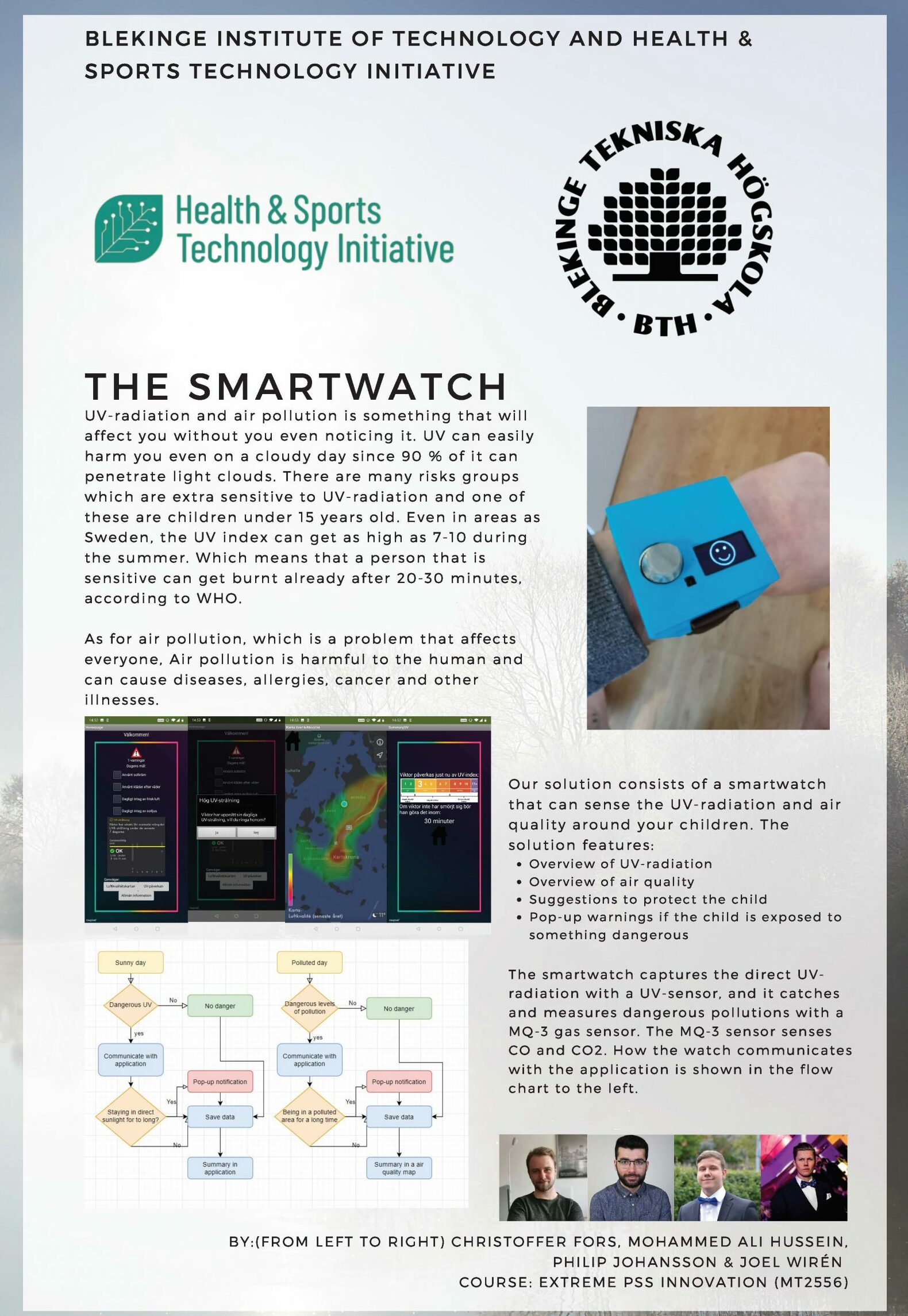During the last semester has Health & Sports Technology Initiative involved a team of students from BTH to design a new gadget. Here you can se the video of their presentation
Below you can read an interview with the students
1. Tell us short about your project
Background
The project task is to devise a measurement that can help improve health. It has a wide approach to it and can be implemented in many different areas such as sports performance, patients in hospitals, geriatric care, etc.
The use of smartwatches has grown rapidly since 2010. There are many different companies such as Apple, Samsung, Fitbit, and Garmin. The usage area seems to get broader and broader as the watches get more features added to them. The project has a collaboration with the Sports & Health institute at Blekinge institute of technology.
Idea – The idea in the beginning was to use a Medical PPG testbed called Bloodlight developed by CodeThink. The PPG uses light to shine into the skin and reads the reflection of it. It currently has both red/infra-red and green LEDs on it. It runs on an open-source code and is available to everyone. Because the testbed was hard to work with, the team decided to use Arduino with added sensors instead to speed up the workflow.
Plan– The plan of the project was to follow the course workshops and use the methods and tools presented in the course “Extreme PSS Innovation”, because this project is part of that course.
Solution – The solution consists of a physical watch with sensors and a screen that is meant to be used by kids in the age between 4-8 years old, an app that summarizes and analyzes data collected by the “watch” and displays it to the parent in a way that makes it easy for the parent to take action.
2. What was the most challenging in this project?
The most challenging part of this project was to develop an app that would have all the functionality that we wanted, mostly because no one in the group has much experience in programming. This is why the app is simplified and mostly used for testing purposes.
3. How did you come up with the idea of a gadget for sun and air pollution protection?
By analyzing the market and seeing where we could find a “blue ocean”, going back and forth between different ideas that came up in the ideation phase, and because the team thought that this was an interesting segment to look deeper into.
4. What will happen with your project now?
It’s unclear at the moment what will happen with the project, but it is possible that we will keep working on it after this semester if we see an interest.
